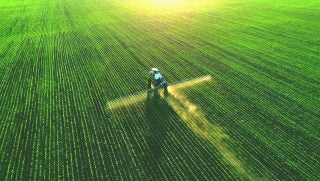Pigs are not only funny critters, the pig show is the highlight of the fair. I know that this is true not only because of my personal experience participating in the pig show, but because there’s a whole TV series about it! Although Discovery Plus’ Pig Royalty isn’t the most accurate depiction of pig showing, it proves that lots of folks love a good ol’ pig show. So, it’s natural to wonder how judging pigs at these shows works.
Pig shows are entertaining in themselves, but they are even better when you know how to judge them! Because pigs are either entering the breeding or the meat market, there are a few differences in judging market hogs and breeding stock.
Market hogs include any pig intended for slaughter, and breeding stock is any pig meant to reproduce. When picking a pig for the show, keep in mind how much time you have. You can show a pig at any stage in their life, but if you’re showing a market hog, you’ll want them to be at their finishing weight at the show. The goal for slaughter is around 250 pounds, but this can vary somewhat depending on the breed.
To judge a market hog you take a look at the degree of muscling, growth, capacity, degree of leanness, and structure — in that order. For a breeding hog you’re looking for structure, growth, underline quality, capacity, degree of muscling, and degree of leanness — in that order.
Let’s dive right into it: How do you judge a pig?
Degree of muscling
The first place you look for muscling is the hams. Take a rear view look at your pig and look at the width between the widest part of the hams — the widest part should be right in the middle of the ham. You also want the rear legs to have lots of width between them, this wide base helps the pig strut their stuff through the ring comfortably. Next you’ll take a look at the back from the same rear view. Does the pig have a sharp topline, or do they have muscles creating an M shape for the back? You want to have the M shaped back; these big muscles are the pork chops, so the bigger the muscles here the better!
Growth
Growth is just how we compare the pigs in the class. The judge is going to assume that every pig in the class was born around the same date, so the biggest and best muscled pig has the best growth in the class. All you can do to assure that your pig has good growth is make sure that your pig is gaining muscle everyday, not just fat.
Growth is really important when evaluating a market hog because you have to remember that every pig has the same number of pork chops, hams, and loins. Even on a perfectly muscled and marbled pig, you’d rather have a big pig over a small pig because the big pig just has more meat.
Capacity
Capacity is evaluating the pig’s ability to eat, grow, and reproduce, so you’ll evaluate the width, depth, and length of the pig. Take a look at the width between the legs at the hooves. Does the width between the hooves match the width between the legs at the chest and the hams? The goal is a consistent wide width. The wider the legs are set apart the more muscle the pig is able to pack in.
The depth of body needs to be uniform from the fore to rear flank, meaning a straight underline and topline is good. Although you want a deep bodied pig, a fat pig will appear very deep bodied, and we don’t want fat pigs. The length of the pig is measured from the fore flank to the rear flank, and it just needs to be proportional with the rest of the pig.
To help you evaluate if your pig has good capacity or not, take a look at them with a freshly full belly. After eating their first couple pounds of feed in the morning, does your pig go from beauty to pot belly? Your pig should look filled out and even at all times and not bloated, even after a big meal or carrying a litter of piglets.
Degree of leanness
A good pig has lots of fat in their belly, jowel, and over their back, so there’s no need for excessive fat on the pig — no jiggly pigs! To evaluate leanness, look at the jowel, the shoulder, the flanks, the ham loin junction, and the tail head. The ideal pig’s jowl will transition tightly into the shoulders, and you’ll be able to see their shoulder blade moving as they walk, you’ll be able to clearly see an indent at the ham loin junction, and the trailhead won’t have any loose skin. The only fat that matters is intramuscular, or marbling. Excess fat is just going to be cut off in the butcher shop, and it adds nothing to the meat you’ll get from the pig.
Structure
To evaluate the structure and soundness of the pig, work from the ground up. You want to see all the toes pointing forward, the hocks and knees straight, the legs clean boned, and the pasturns set at about a 45 degree angle from the ground. All this allows the pig to move comfortably and smoothly. The topline of the pig should be pretty straight, but the rump should slope downward slightly from the end of the loin to the tail head. The sloped rump allows the pig to farrow easy and take big strides with their back legs.
The shoulders of the pig need to be smooth, and almost unnoticeable when the pig is still, but it should flex with ease and allow the pig to take big smooth strides. You don’t want to see the shoulder bow out from the chest wall.
Underline quality
The underline of the pig is its belly line where all the nipples are located, which is super important because pigs have huge litters and need to be able to feed them all. When in lactation, the belly will sag a little lower, so having a tight and higher set underline before farrowing is important because it shows that the pig will have an underline that won’t drag on the ground, and she’ll be able to have many litters.
Check out this awesome livestock judging resource to practice pig judging and oral reasons!
Pigs are funny critters that aren’t hard to judge at all! Whether you’re showing a pig at your upcoming county fair or you’re just a spectator, see if you can spot the prized pig before the judge!
Elizabeth Maslyn is a Cornell University student pursuing a career in the dairy industry. Her passion for agriculture has driven her desire to learn more, and let the voices of our farmers be heard.



